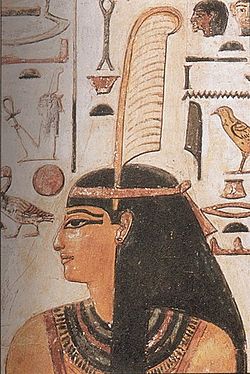Build your own dreams, Get started using this CODE: EOSDAHLIA6M2 to get a 20% off Reach.
Understanding Maat: The Foundation of Social Life in Ancient Egypt
Why "Ma'at"? Ma'at is a symbol of truth and justice in ancient Egypt. In this article, you will learn a brief overview of the meaning of Ma'at and its impact on ancient Egyptian society.
Dahlia SaadEl-Din
8/3/20252 min read


What is Maat?
Maat is an essential concept in ancient Egyptian culture, representing truth, balance, order, and justice. It was more than just a moral principle; it formed the foundation of Egyptian society and governance. The ancient Egyptians believed that adhering to the principles of Maat was vital for maintaining cosmic balance and harmony in both the earthly and divine realms.
The Role of Maat in Daily Life
In daily life, the influence of Maat was observed everywhere, from governance to personal relationships. Leaders and pharaohs were expected to embody Maat, making fair decisions that benefited their people. This is symbolized in numerous tomb paintings, where leaders are depicted in roles that emphasize their commitment to truth and justice.
For example, in the tomb of Nefertari (Tomb QV66), frescoes illustrate her in a pose that demonstrates the ideals of Maat. The artists aimed to convey her divine connection and importance in preserving societal order. This highlights how integral Maat was to leadership and public perception in ancient Egypt.
Social Implications of Maat
The societal norms established by Maat influenced all aspects of life in ancient Egypt. The concept dictated laws, customs, and even religious practices. The ruling class was held accountable to Maat, ensuring those in power conducted themselves ethically and justly. In this regard, ordinary citizens were encouraged to embrace Maat in their conduct, fostering a collective sense of responsibility towards community welfare.
Moreover, the principle of Maat developed a code of conduct that transcended classes, encouraging harmony among workers, artisans, and even slaves. Rituals and festivals honoring Maat reinforced social harmony, as people gathered to celebrate their collective adherence to truth and order, further cementing the norms that governed their lives.
Images from ancient tombs illustrate these social gatherings, showcasing the community's unity. One notable example is found in the Tomb of Nakht (Tomb TT52), where artwork depicts a lively celebration emphasizing shared values amongst the people.
Maat's influence didn’t just shape social interactions but also sustained the legal framework of ancient Egypt. Laws were crafted to reflect Maat's principles, and disputes were resolved by appealing to these same ideals of truth and justice. The belief was that failing to uphold Maat would lead to chaos and disorder, a fear that governed the behaviors of both rulers and citizens.
Conclusion
Maat is more than just an ancient concept; it is a pivotal element that shaped the very fabric of ancient Egyptian society. By understanding Maat, we gain insights into governance, social interactions, and the collective ethos that guided the Egyptians. Maat represents a legacy of balance and harmony that can still inform our modern societal values today.
Further Reading
For those interested in deepening their understanding of Maat and its implications in ancient Egyptian life, the following texts are recommended:
"The Egyptian Book of the Dead: The Book of Going Forth by Day" - Translated by Raymond Faulkner
"Maat: The Moral Ideal in Ancient Egypt" by Maarten J. Raven
"The Oxford History of Ancient Egypt" by Ian Shaw
Maat wearing the feather of truth


